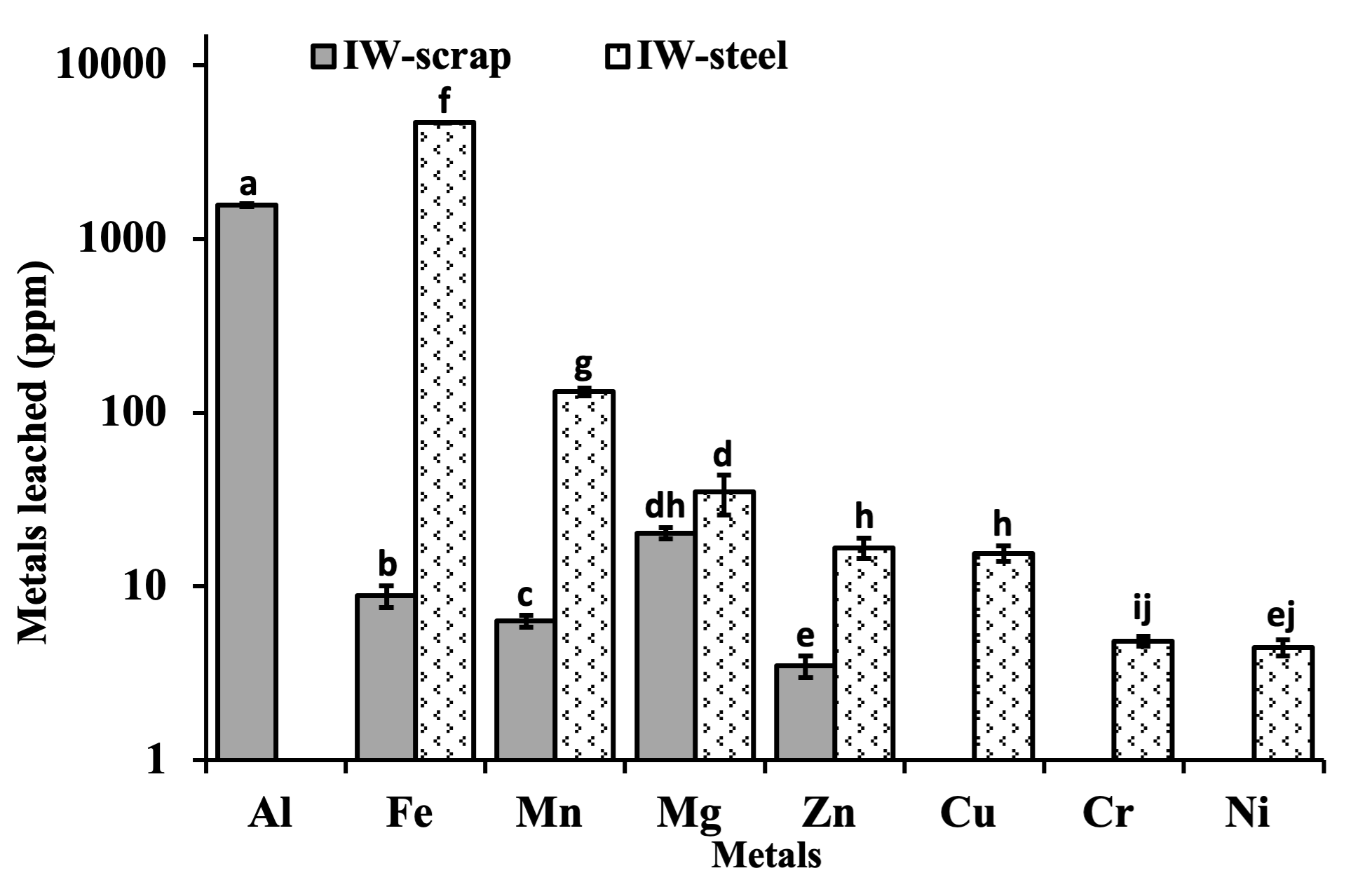 |
|
The present study evaluates the ability of Acidithioobacillus thiooxidans DSM 26636 to grow and leach metals from industrial wastes (IW) containing different metal compositions, coded as IW-steel and IW-scrap. For this purpose, biolixiviation processes were assessed during 21 days at 30°C and 150 rpm, with 1% (w/v) of IW pulp density. Microbial growth was evaluated periodically by measuring sulfates´ production; pH and sulfuric acid concentration were also monitored, and metal bioleaching was evaluated by ICP-OES. Results showed that A. thiooxidans sulfur-oxidizing activity was higher in the presence of IW-steel. Specifically, sulfates and sulfuric acid production in IW-steel corresponded to 21,524 mg/L and 0.096 M, respectively, with a pH diminution to 1.54. In the case of IW-scrap, sulfates´ production only increased to up to 4392 mg/L at day 21, and not so significant changes were observed in pH and sulfuric acid concentration. Besides, metal removal was higher in IW-steel, being Fe > Mn > Mg ≥ Zn ≥ Cu > Cr ≥ Ni. The results obtained reinforce the fact that A. thiooxidans DSM 26636 presents an elevated potential to be employed in biotreatment processes, and that its biolixiviation efficiency strongly depends on the metal content present in the residues.
Keywords: Acidithiobacillus thiooxidans, industrial wastes, bioleaching, metals, sulfur-oxidizing activity.
|
|
 |

